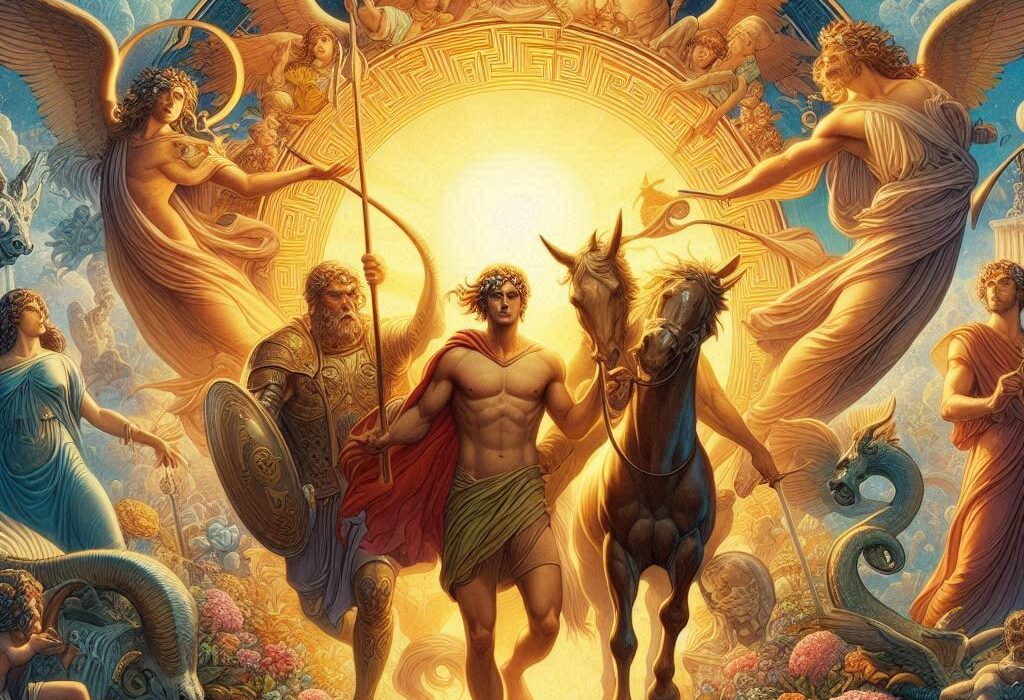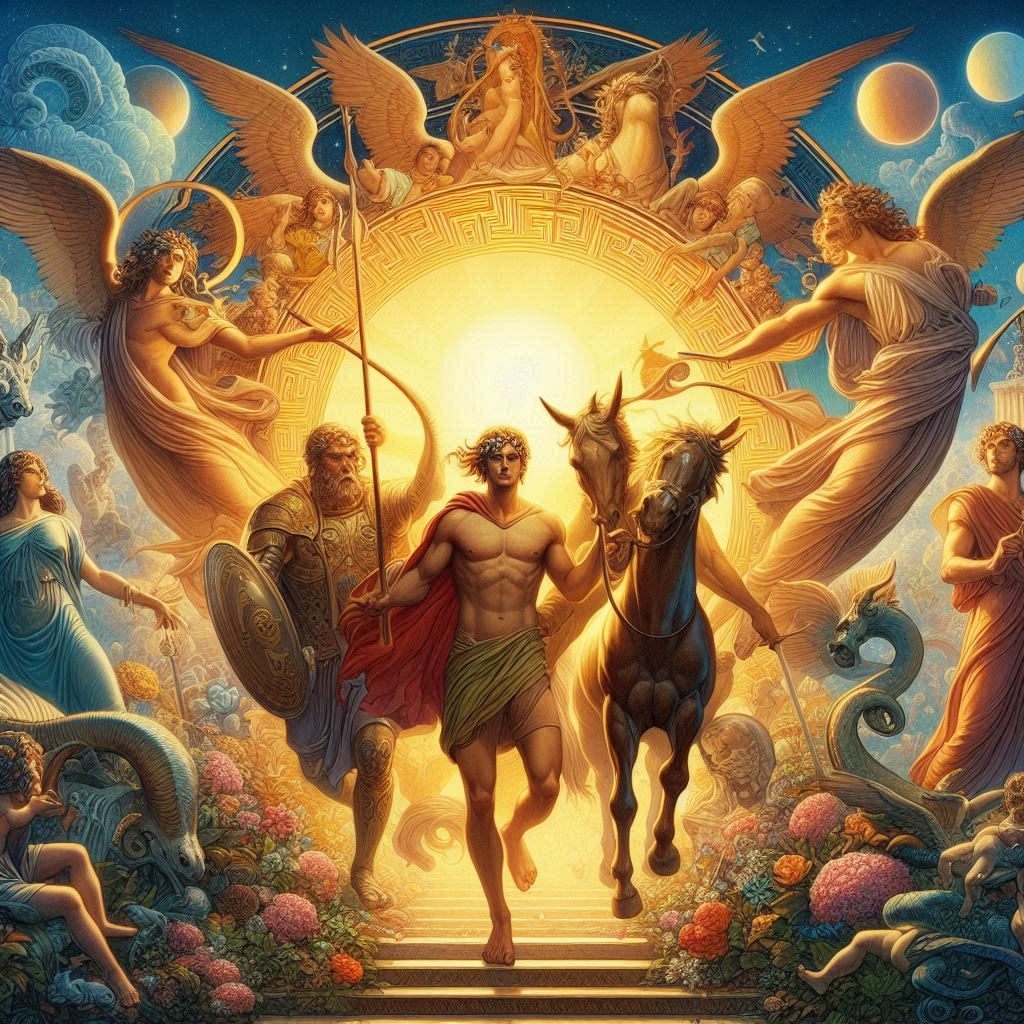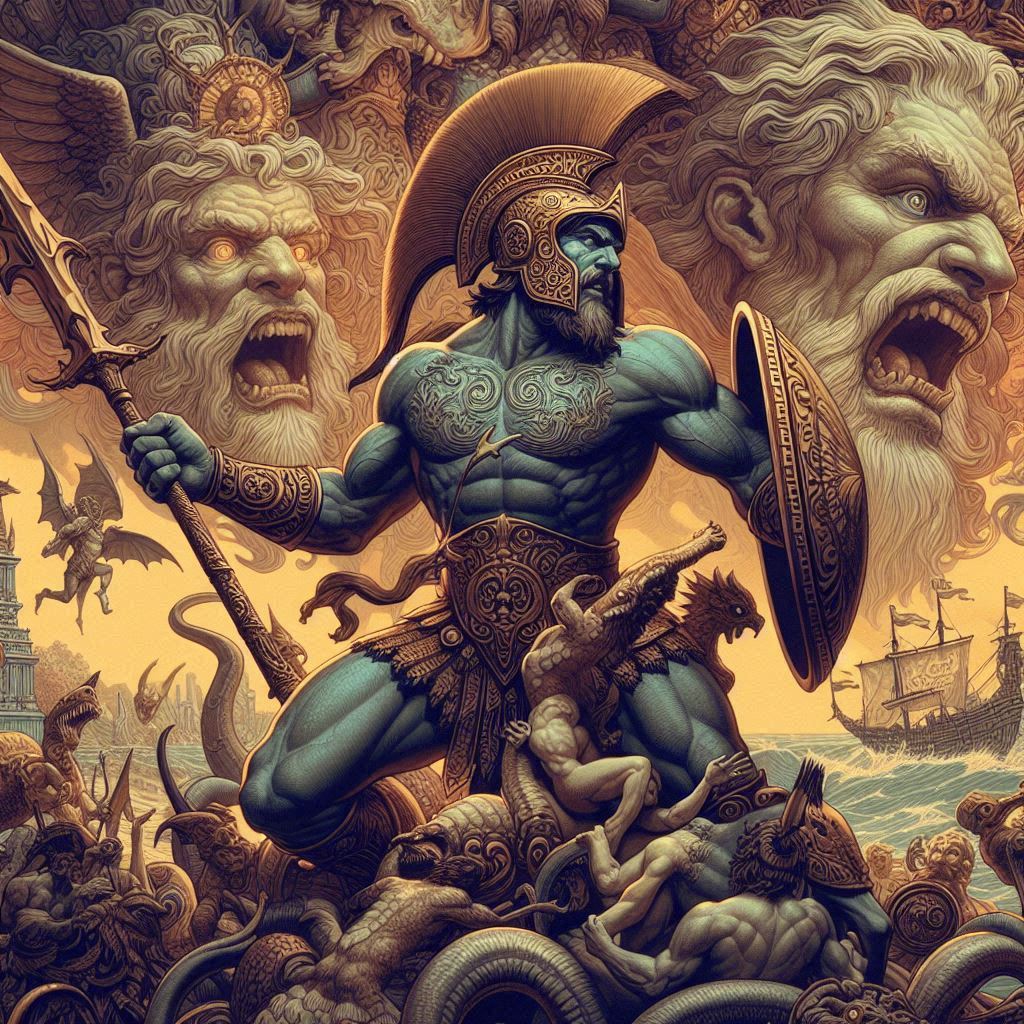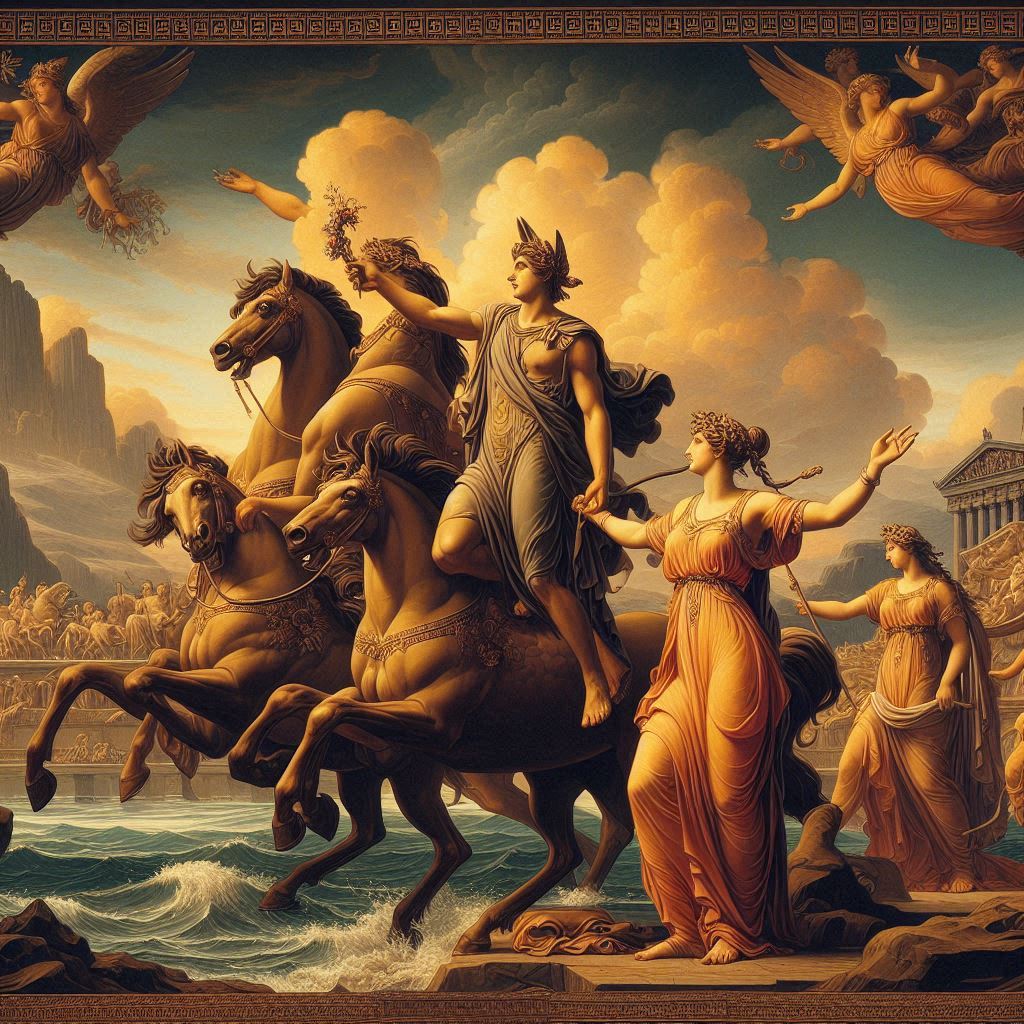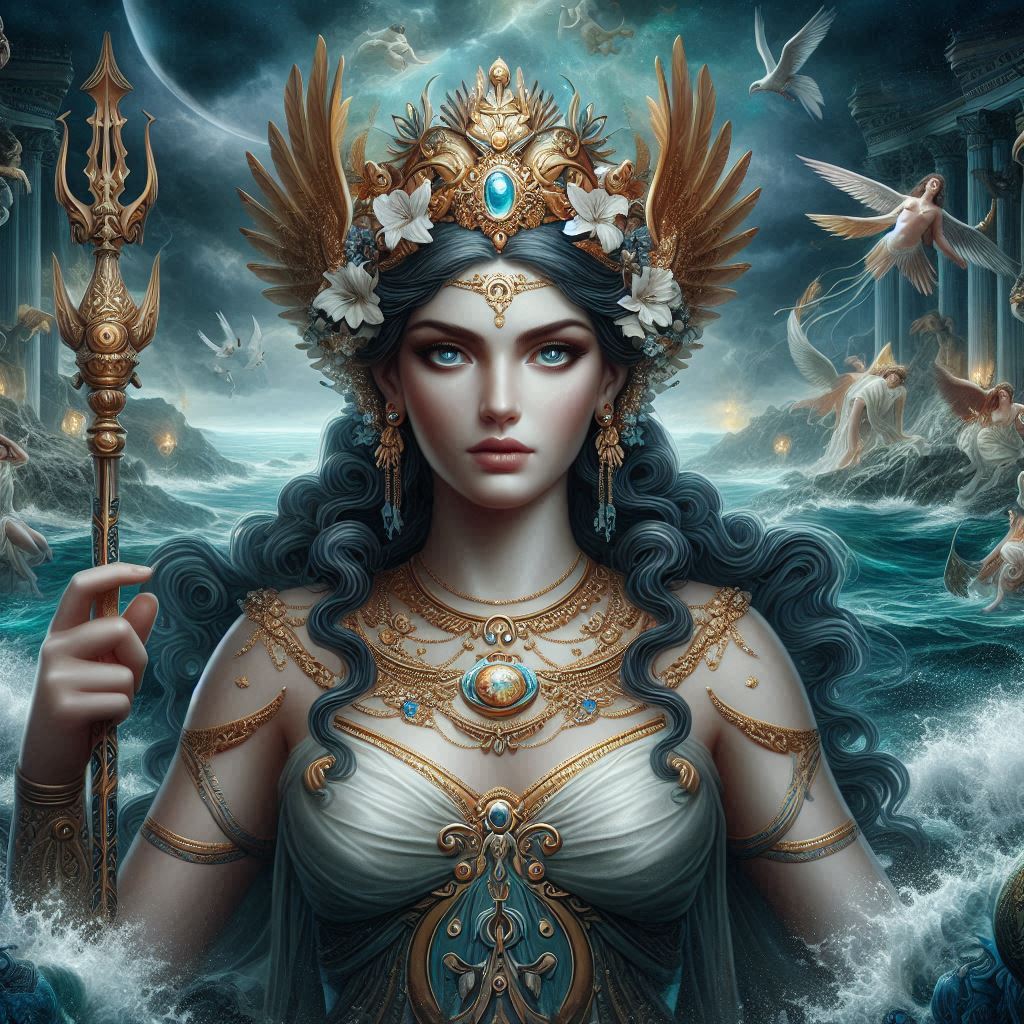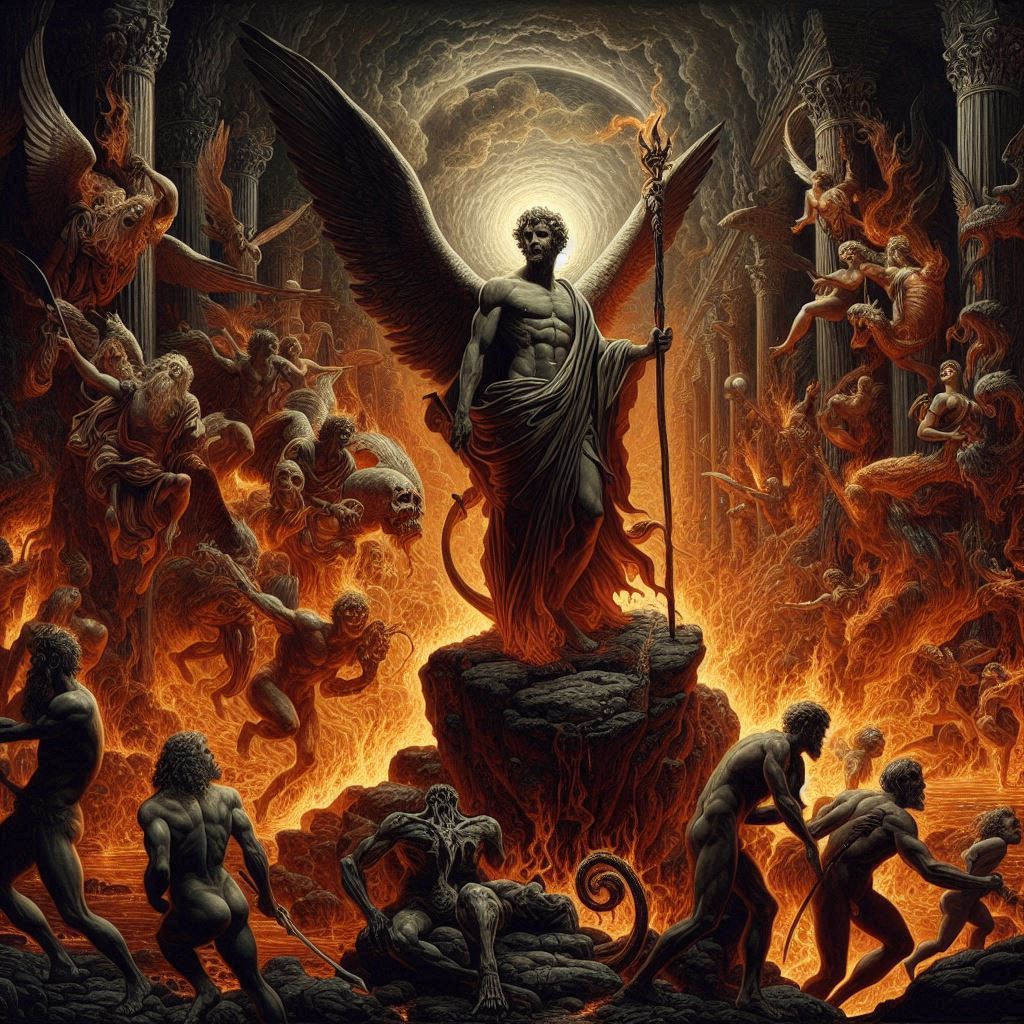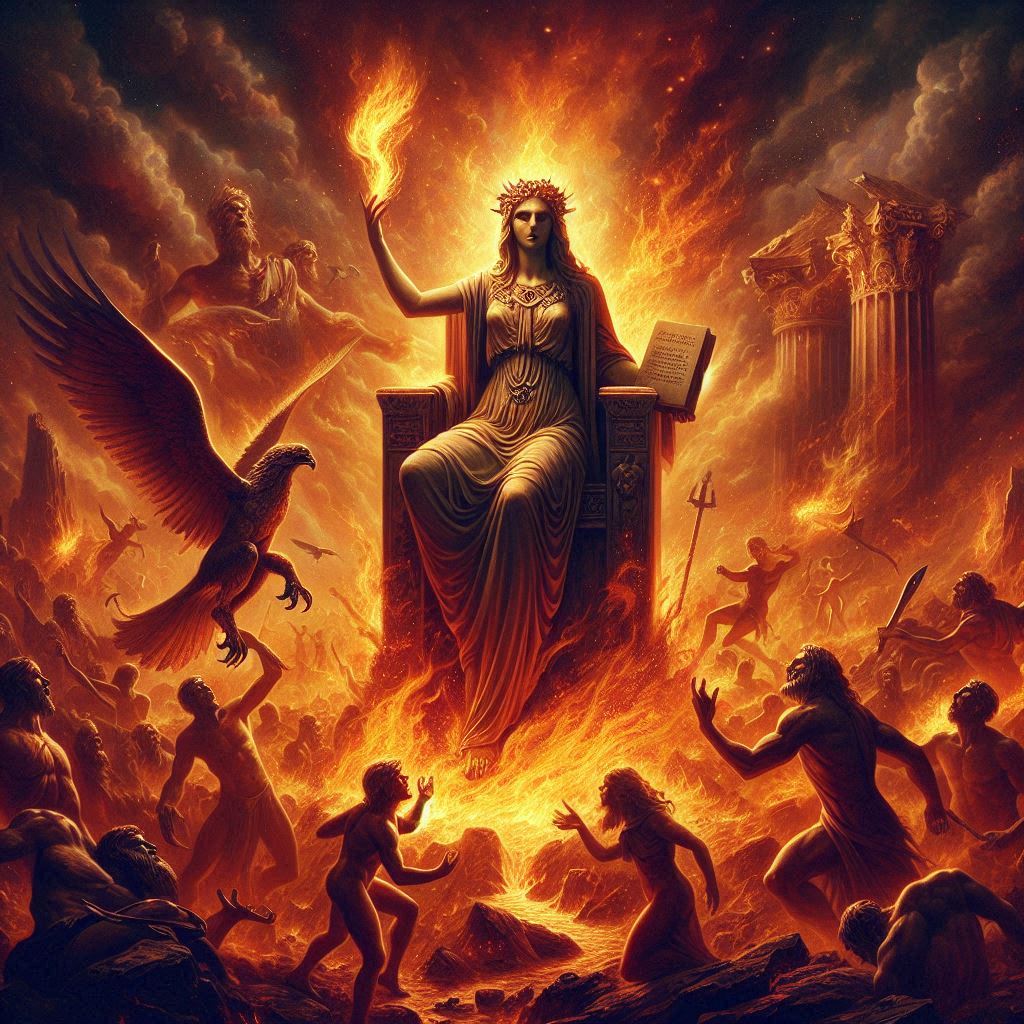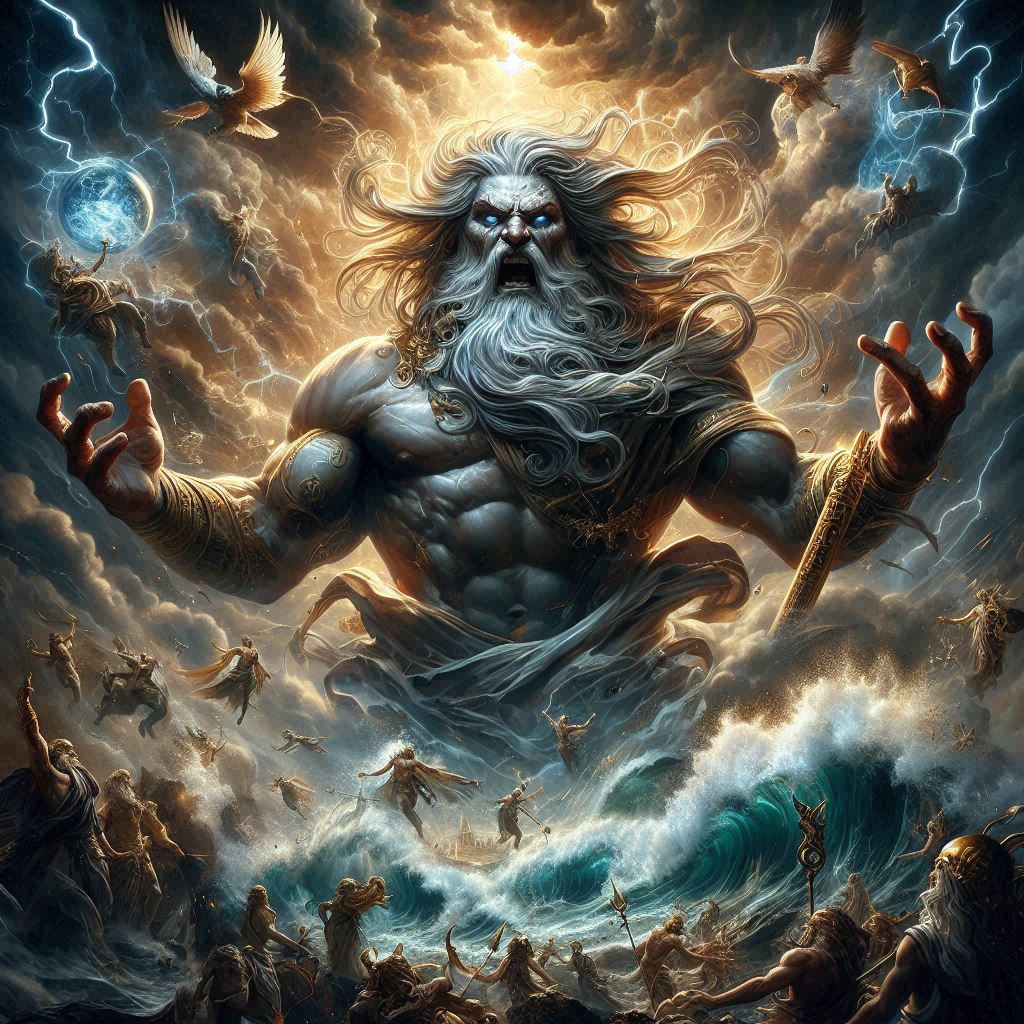The Hero’s Journey is a narrative archetype that appears in myths, legends, and folklore across cultures, representing the universal pattern of human experience and transformation. In Greek mythology, the Hero’s Journey is exemplified by the trials, tribulations, and triumphs of legendary heroes such as Heracles, Perseus, Theseus, and Odysseus. These heroes embark on epic quests, confront formidable adversaries, and undergo profound transformations as they navigate the challenges of their journeys.
At its core, the Hero’s Journey consists of several stages that the hero must traverse in order to achieve personal growth, self-discovery, and ultimate victory. These stages, as outlined by Joseph Campbell in his seminal work “The Hero with a Thousand Faces,” include the Call to Adventure, Refusal of the Call, Supernatural Aid, Crossing the Threshold, Trials and Challenges, Meeting with the Mentor, Revelation and Atonement, and the Return with the Elixir. Each stage represents a key aspect of the hero’s quest and is accompanied by symbolic motifs, archetypal characters, and transformative experiences.
The Call to Adventure marks the beginning of the hero’s journey, as the protagonist is summoned to embark on a quest or face a challenge that will test their courage, resolve, and character. In Greek mythology, the Call to Adventure often comes in the form of a divine decree, prophetic vision, or heroic lineage that sets the hero on their path to greatness. For example, Heracles receives his call to adventure when he is tasked with completing the Twelve Labors as penance for his past deeds, while Perseus is called upon to slay the Gorgon Medusa and rescue Andromeda from a sea monster.
However, the hero may initially refuse the call, reluctant to leave their comfort zone or confront the dangers that lie ahead. This Refusal of the Call is a common motif in Greek mythology, where heroes such as Theseus and Odysseus express doubts, fears, and reservations about undertaking their quests. These moments of hesitation and uncertainty serve to humanize the hero and add depth to their character, highlighting the internal conflicts and moral dilemmas they must overcome in order to fulfill their destiny.
Eventually, the hero receives Supernatural Aid or guidance from a divine or mystical source that helps them overcome their doubts and fears and embark on their journey with renewed confidence and determination. In Greek mythology, this aid often comes in the form of assistance from gods, goddesses, or supernatural beings who bestow gifts, weapons, or wisdom upon the hero to aid them in their quest. For example, Athena provides Perseus with a mirrored shield to aid him in his battle against Medusa, while Hermes guides Odysseus on his journey home from Troy.
Crossing the Threshold marks the hero’s departure from the ordinary world and entry into the realm of adventure and transformation. This symbolic crossing represents a significant step in the hero’s journey, as they leave behind the familiar and venture into the unknown, where they will face trials, challenges, and adversaries that will test their mettle and shape their destiny. In Greek mythology, heroes such as Theseus crossing the threshold into the labyrinth to confront the Minotaur, or Odysseus setting sail for the distant shores of Troy, exemplify this stage of the Hero’s Journey.
Once the hero has crossed the threshold, they encounter Trials and Challenges that test their strength, courage, and resourcefulness. These trials may take various forms, including battles with monsters, tests of wit and cunning, or trials of endurance and perseverance. In Greek mythology, heroes face a myriad of challenges on their journeys, from Heracles battling the Hydra and capturing the Golden Fleece to Perseus navigating the labyrinth and slaying the Medusa. Each trial represents a rite of passage for the hero, propelling them further along their path of transformation and self-discovery.
Throughout their journey, the hero often meets with a Mentor or wise guide who provides guidance, advice, and support along the way. This Mentor figure serves as a source of wisdom and inspiration, offering the hero invaluable insights and teachings that help them navigate the challenges of their quest and overcome obstacles. In Greek mythology, mentors such as Chiron the centaur, who mentors Heracles and Achilles, or Athena, who advises Odysseus on his journey home, play crucial roles in shaping the hero’s destiny and aiding them in their hour of need.
As the hero progresses on their journey, they experience Revelation and Atonement, gaining deeper insight into themselves, their purpose, and the world around them. These moments of revelation and atonement are often accompanied by profound realizations, epiphanies, or cathartic experiences that bring the hero closer to their ultimate goal and transformation. In Greek mythology, heroes such as Theseus confronting his father, Aegeus, or Odysseus facing the consequences of his actions upon returning to Ithaca, undergo moments of reckoning and redemption that propel them toward their destiny.
Finally, the hero completes their journey and returns home, bringing with them the Elixir or boon that they have gained through their trials and adventures. This Elixir may take various forms, such as knowledge, wisdom, treasure, or a newfound sense of purpose or identity. In Greek mythology, heroes such as Heracles completing his Twelve Labors, Perseus returning with the head of Medusa, or Odysseus reuniting with his family and reclaiming his kingdom exemplify this stage of the Hero’s Journey.
The Hero’s Journey in Greek mythology is a timeless narrative archetype that continues to resonate with audiences today, inspiring countless stories, myths, and legends across cultures and centuries. Through the trials, tribulations, and triumphs of legendary heroes such as Heracles, Perseus, Theseus, and Odysseus, the Hero’s Journey serves as a metaphor for the human experience of growth, transformation, and self-discovery. It reflects the universal themes of struggle, courage, perseverance, and the quest for meaning and identity that resonate with audiences of all ages and backgrounds.
One of the quintessential examples of the Hero’s Journey in Greek mythology is the epic tale of Odysseus, the cunning and resourceful hero of Homer’s “The Odyssey.” Odysseus’s journey spans ten years as he faces countless trials and challenges on his quest to return home to Ithaca after the Trojan War. His odyssey is a testament to the hero’s resilience, wit, and determination as he overcomes obstacles, confronts adversaries, and undergoes profound transformations along the way.
Odysseus’s Call to Adventure begins with the Trojan War, where he distinguishes himself as a cunning strategist and leader among the Greek forces. However, his journey truly begins when he incurs the wrath of the sea god Poseidon, who curses him to wander the seas for ten years before reaching his homeland. Thus, Odysseus embarks on a perilous voyage filled with trials and tribulations that will test his ingenuity, courage, and loyalty.
The Refusal of the Call is evident in Odysseus’s initial reluctance to leave the comforts of Troy and embark on a long and arduous journey home. Despite his desire to reunite with his beloved wife Penelope and son Telemachus, Odysseus hesitates to face the unknown dangers that await him on the open sea.
Supernatural Aid comes in the form of divine intervention and guidance from the goddess Athena, who serves as Odysseus’s patron and protector throughout his journey. Athena bestows wisdom, courage, and cunning upon Odysseus, aiding him in his encounters with monsters, sorceresses, and other supernatural beings that hinder his progress.
Crossing the Threshold occurs as Odysseus sets sail from Troy with his fleet of ships, bound for Ithaca. His departure marks the beginning of his epic odyssey, where he will face a series of challenges, temptations, and trials that will shape his character and destiny.
Trials and Challenges abound as Odysseus navigates the treacherous waters of the Mediterranean, encountering dangers such as the Cyclops Polyphemus, the enchantress Circe, the Sirens, and the wrath of the sea god Poseidon. Each trial tests Odysseus’s cunning, bravery, and leadership skills as he strives to outwit his adversaries and find a way back to Ithaca.
The Meeting with the Mentor occurs when Odysseus seeks guidance and assistance from wise allies and mentors along his journey. From the advice of the seer Tiresias in the underworld to the aid of the loyal swineherd Eumaeus and the faithful cowherd Philoetius, Odysseus receives support and counsel that helps him navigate the challenges he faces.
Revelation and Atonement occur as Odysseus gains insight into himself, his past actions, and the consequences of his decisions. His encounters with the shades of the dead in the underworld, including his fallen comrades and enemies, force him to confront his own mortality and the price of his hubris and cunning.
The Return with the Elixir is achieved when Odysseus finally reaches Ithaca and reunites with his family and kingdom. His long and arduous journey has transformed him into a wiser, more humble, and compassionate leader who appreciates the value of home, family, and loyalty.
The Hero’s Journey of Odysseus in “The Odyssey” serves as a timeless narrative archetype that resonates with themes of perseverance, resilience, self-discovery, and the human capacity for growth and transformation. Odysseus’s odyssey is a testament to the enduring appeal and relevance of the Hero’s Journey in Greek mythology and its universal significance as a symbol of the human quest for meaning, identity, and fulfillment.
